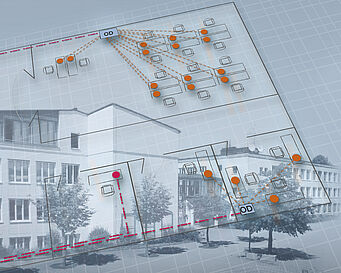The optimal IT network: Strategic issues & current trends
What long-term strategy are you pursuing with your company? This question may be unusual for many in a blog article on the subject of building cabling. But it is precisely this topic that is often neglected during planning. The consequences are felt afterwards when the local network offers too little flexibility or the bandwidth no longer meets the requirements. After all, the LAN network is where all the company's threads come together. It forms the basis for the functioning of the daily work routine.
Important factors for choosing the right network solution
There are many solutions for setting up a building infrastructure that fits the individual corporate strategy. In order to decide on the right cabling system, the most important framework conditions must be defined in advance, fundamental questions must be clarified and the target state must be defined. Are you pursuing a growth strategy, but cannot yet estimate how many network access points will be needed in 10 or 15 years? Do you want to establish yourself as a modern employer and transform the office building into a smart office in the near future? Do you rely on new working models with variable office spaces in combination with a home office concept? All these determinants are significant for the choice of a network solution. Depending on the company's own strategic orientation and already established building, IT and process structures, the challenges are different. It is often worthwhile to involve experts in the discussion. They are familiar with the current trends and can advise on which options make sense.




